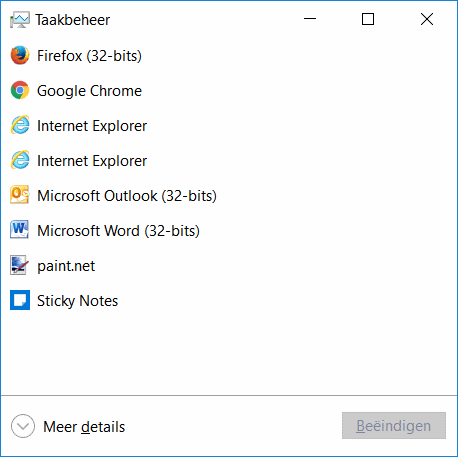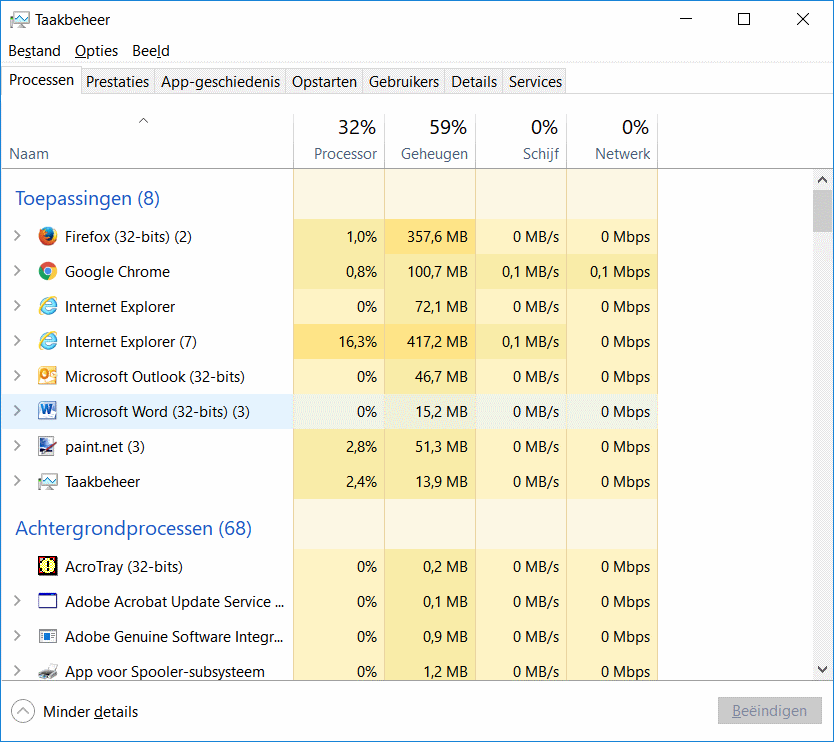
Quickly close crashed programs via Task Manager. This section is also useful to see which active applications are demanding a lot from the hard disk.
Launch Task Manager with Alt+Crtl+Delete
Task Manager is part of Windows. It provides an overview of the open programs. If a program does not work properly or has crashed, it can be closed via Task Manager. Task Manager also offers all kinds of overviews about the performance of the computer. This tip shows you how to open the Windows Task Manager, close a stuck program, and see the other options.
Open task manager
Task Manager can be opened in two ways:
- Click the magnifying glass icon in the Taskbar.
- Type: Task Manager.
- click on task management in the list of results.
Or:
- Press the keyboard shortcuts Ctrl+Alt+Delete.
- click on task management in the menu.
You will see the Task Manager window. Here are the programs that are active on the PC. You have other programs than in the picture, but the structure of the window is the same:

If a program has crashed, it will say “Not Responding” after the name of the app. Then close the program as follows:
- Click on the name of the stuck program.
- click on To end.
- The program is closed. Caution: data that you have not saved may be lost. Only close programs in this way if the application is really not doing anything anymore.
Monitor computer load with Task Manager
Task Manager seems like a compact app, but the program houses a lot of information.
- For this information click More details.
- You will see a much more extensive window with all tabs. You have other programs listed, but the structure of the window is the same:

- The tabs are mainly intended for information purposes. For example, the ‘Performance’ tab shows what capacity the hard drive is working on. This is stated in percentages. Under ‘App history’ you can see which programs have been used and for how long you did this. The ‘Startup’ section is for advanced users. Here you will find which programs start automatically with Windows. The other tabs are of little interest to the average user.
- To return to the compact version of Task Manager, click Less detail.
- Close the window via the cross at the top right.